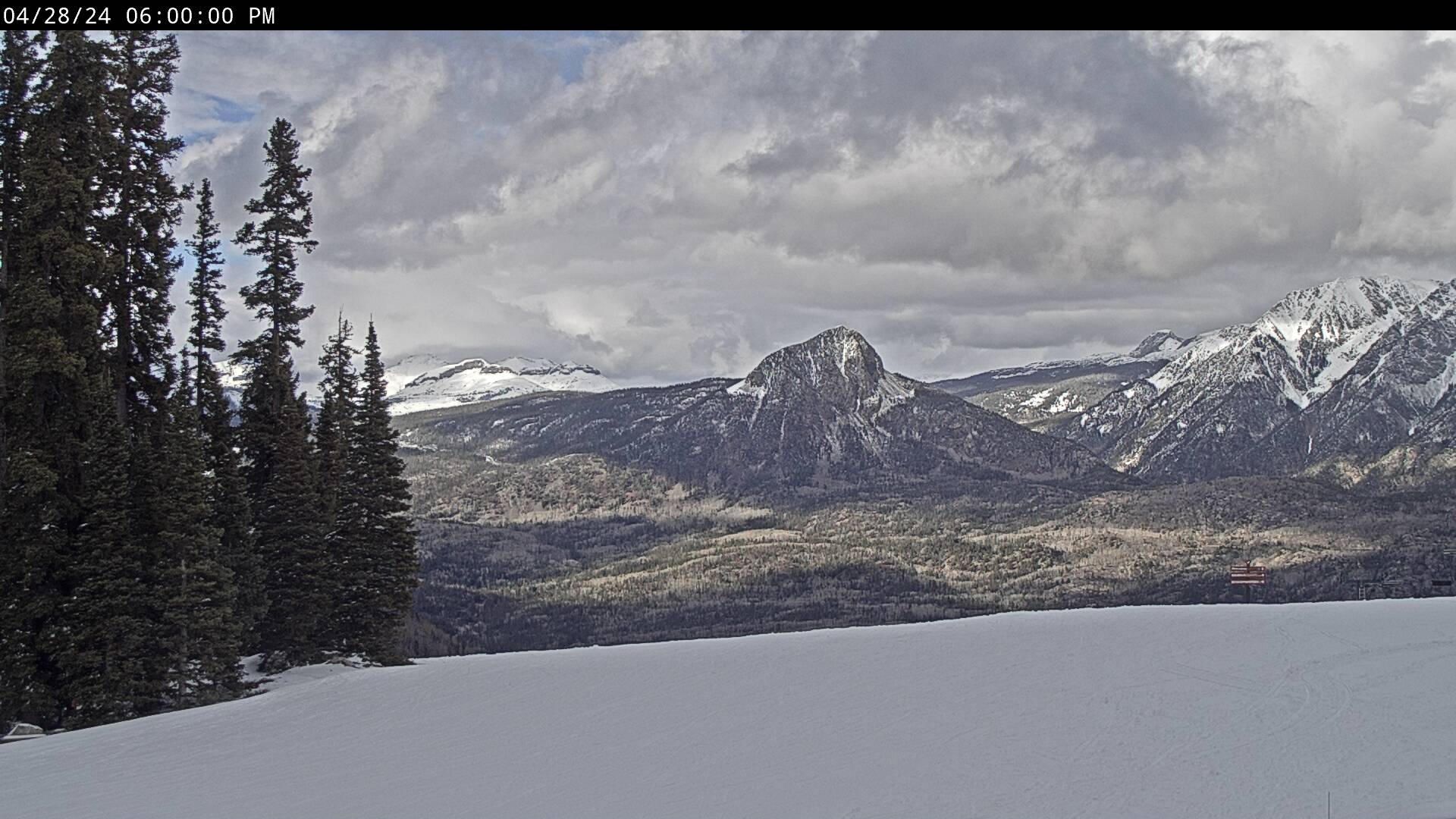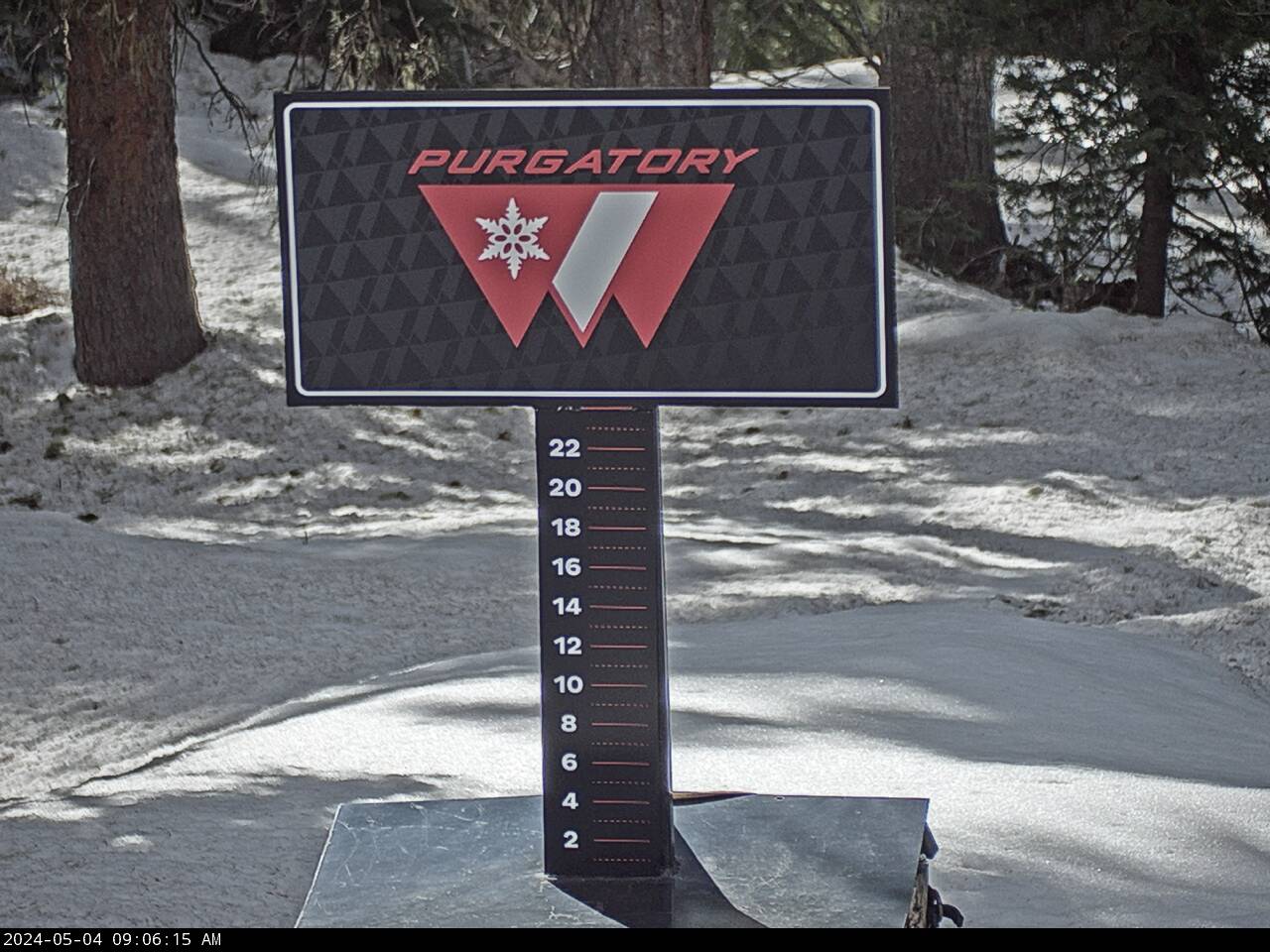Purgatory Resort, Colorado Weather Cams
Village Express Base Cam
Village Express Summit Cam

Purgatory Resort Snow Stake Cam

Purgatory Ski Resort: A Powder Playground in the San Juan Legacy
Purgatory Resort, Colorado Weather Cams. High in the rugged San Juan Mountains of southwestern Colorado, just 25 miles north of Durango, lies Purgatory Resort—a ski destination with a name as evocative as its terrain. Since its founding in 1965, Purgatory has grown from a local ski hill into a beloved four-season resort, all while embracing the wild beauty and storied past of the surrounding La Plata County and San Juan National Forest.
Origins: A Vision in the San Juans
The idea for Purgatory was born in the early 1960s, when a group of Durango locals, including Forest Service snow ranger Chet Anderson and Olympic ski coach Dolph Kuss, envisioned a ski area that could serve the Four Corners region. They were drawn to the north-facing slopes of the Hermosa Cliffs, where consistent snowfall and dramatic views of the Needle Mountains offered ideal conditions.
The resort officially opened on December 4, 1965, with one chairlift, a rope tow, and a modest day lodge. The name “Purgatory” was inspired by nearby Purgatory Creek, itself a reference to a 1776 Spanish expedition in which several explorers were lost. Their companions believed the souls of the missing men were trapped in purgatory—a legend that lent a touch of mystique to the fledgling resort.
Growth and Character
From the beginning, Purgatory distinguished itself with a laid-back, family-friendly atmosphere and terrain that catered to all skill levels. The resort’s early years saw steady expansion, including new lifts and trails that opened up more of the mountain’s 1,600 skiable acres. The terrain offered a mix of wide cruisers, steep glades, and natural features that made it a favorite among locals and visiting powder hounds alike.
In the 1980s and 1990s, Purgatory—then briefly rebranded as Durango Mountain Resort—continued to grow, adding lodging, restaurants, and summer activities. Despite the name change, longtime fans continued to call it “Purg,” a nickname that stuck even after the resort officially restored its original name in 2015 under new ownership.
A New Era: The Coleman Vision
In 2015, James Coleman, a New Mexico-based entrepreneur and lifelong skier, purchased the resort. Coleman had learned to ski at Purgatory as a teenager and credited the mountain with igniting his passion for the sport. His acquisition marked a turning point: he immediately reinstated the Purgatory name and launched a series of upgrades aimed at enhancing the guest experience while preserving the resort’s character.
Under Coleman’s leadership, Purgatory installed the high-speed detachable quad “Legends Lift 8,” expanded snowmaking capabilities, and added new trails. The resort also embraced summer operations, introducing lift-served mountain biking, an alpine slide, and scenic chairlift rides. These changes helped transform Purgatory into a true year-round destination.
The San Juan Setting
Purgatory’s location in the San Juan Mountains is central to its identity. The San Juans are Colorado’s largest and steepest mountain range, formed by volcanic activity and sculpted by glaciers over millions of years. The range is known for its dramatic peaks, deep canyons, and colorful geology—features that make it a paradise for outdoor enthusiasts.
The resort sits within the San Juan National Forest, which spans 1.8 million acres and includes alpine tundra, dense spruce-fir forests, and hundreds of lakes. The forest was established in 1905 and has long been a haven for recreation, wildlife, and watershed protection. Purgatory operates under a special use permit from the U.S. Forest Service, balancing development with environmental stewardship.
Durango and La Plata County: A Cultural Crossroads
The nearby city of Durango, founded in 1880 as a railroad town, provides the cultural and economic backbone of the region. Originally built to serve the Denver & Rio Grande Railway and the booming mining camps of Silverton, Durango has evolved into a vibrant community known for its historic downtown, arts scene, and outdoor lifestyle.
La Plata County, named for the Spanish word for “silver,” has a rich history shaped by Indigenous peoples, Spanish explorers, miners, and ranchers. The Ute people were the region’s original inhabitants, and their presence is still felt today through cultural sites and ongoing tribal connections. The county’s economy has diversified over time, with tourism, education, and renewable energy joining traditional industries like agriculture and mining.
A Resort for All Seasons
Today, Purgatory Resort offers 105 trails served by 11 lifts, including high-speed quads and surface lifts for beginners. The mountain receives an average of 260 inches of snow annually, with terrain ranging from gentle groomers to challenging tree runs and terrain parks. The resort also features ski-in/ski-out lodging, dining, and a ski school that caters to families and first-timers.
In summer and fall, the mountain transforms into a playground for hikers, bikers, and festival-goers. The nearby Purgatory Flats Trail and Engineer Mountain Trail offer access to alpine meadows and panoramic vistas, while the resort’s bike park and zipline attract thrill-seekers of all ages.
One of the most exciting additions in recent years is the Palisade Plunge, a 32-mile mountain bike trail that descends from the Grand Mesa to the town of Palisade. Purgatory serves as a key access point for this and other regional trail systems, reinforcing its role as a hub for outdoor adventure.
Looking Ahead
As it approaches its seventh decade, Purgatory continues to evolve while staying true to its roots. The resort’s leadership remains committed to a “skiing first” philosophy, investing in infrastructure and guest services without losing sight of the mountain’s soul. Community events, local partnerships, and environmental initiatives ensure that Purgatory remains not just a resort, but a vital part of the southwestern Colorado landscape.
Whether carving turns on a bluebird powder day, hiking through golden aspens, or sipping cocoa by the fire, visitors to Purgatory find themselves immersed in a place where nature, history, and recreation converge. It may be named for a place between heaven and hell—but for many, Purgatory is as close to paradise as it gets.
For more information, visit the Purgatory Resort, Colorado official website.
